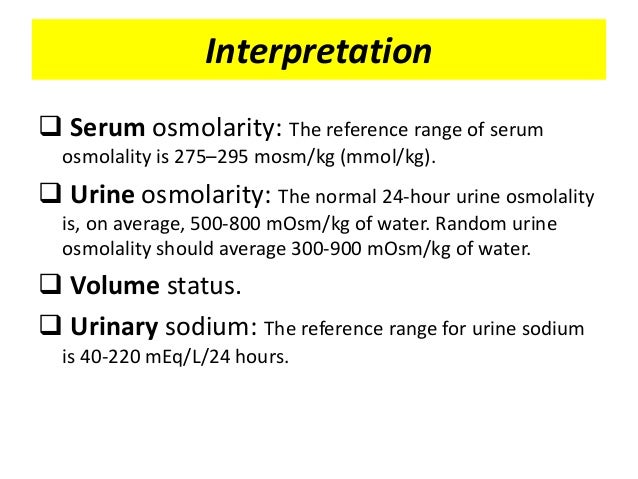

Using the calculated urine sodium concentrations ( Fig. 5 The value chosen for urine volume (100 mL/kg/day) was based on values reported in the literature and verified in our own patient population. Fractional excretion of sodium was based on the interpolation and extrapolation of published longitudinal data on FE Na in preterm infants born in less than 28 weeks’ and 29 to 31 weeks’ gestation. 8 Filtered sodium was calculated using an ideal estimated serum sodium concentration of 138 mEq/L. 11 Glomerular filtration rate at each gestational and postnatal age was extrapolated from the literature. 10 Body surface area was calculated according to a standardized Eq. Values for weight and length at various postmenstrual ages were obtained using an online calculator ( ) based on the revised Fenton growth curves, using the 50th percentile for girls.

Urine sodium concentration = U Na/urine volume (per day).

Using the model, we developed, implemented, and evaluated a clinical practice algorithm based on projected urine sodium concentrations over a range of gestational and postnatal ages to identify sodium deficient preterm infants and guide sodium supplementation on an individual basis. 2, 8 Using published measures of glomerular and tubular function in preterm infants, we modeled expected urine sodium losses and urine sodium concentrations with advancing gestational and postnatal ages.

However, in the preterm population, an approach using urine sodium concentrations as an indicator of total body sodium status is confounded by renal tubular immaturity and higher obligatory urine sodium losses, as well as ongoing maturation of renal function with postnatal age. 7 In the mature kidney, a low urine sodium concentration often reflects active renal conservation of sodium in response to a decrease in total body sodium. 3– 6Īn underappreciated though convenient approach to the assessment of sodium homeostasis is the use of urine sodium concentration measured from a spot urine sample. 1, 2 The issue of determining the quantity of sodium that preterm infants require is significant given the impact of total body sodium status on somatic growth and the well-described link between postnatal growth failure and adverse neurodevelopmental outcome. Beyond the immediate postnatal period, preterm infants have higher sodium requirements (mEq/kg) than term infants and older children, primarily related to the inability of the preterm kidney to retain salt. Preterm birth poses a unique challenge to this process as the immature kidney lacks fully functional regulatory systems, including those involved in sodium homeostasis. Responsibility for maintaining the composition of extracellular fluid with respect to constituents other than oxygen and carbon dioxide resides largely with the kidneys. Sodium is the major cation of extracellular fluid, which includes blood plasma and interstitial fluid.


 0 kommentar(er)
0 kommentar(er)
